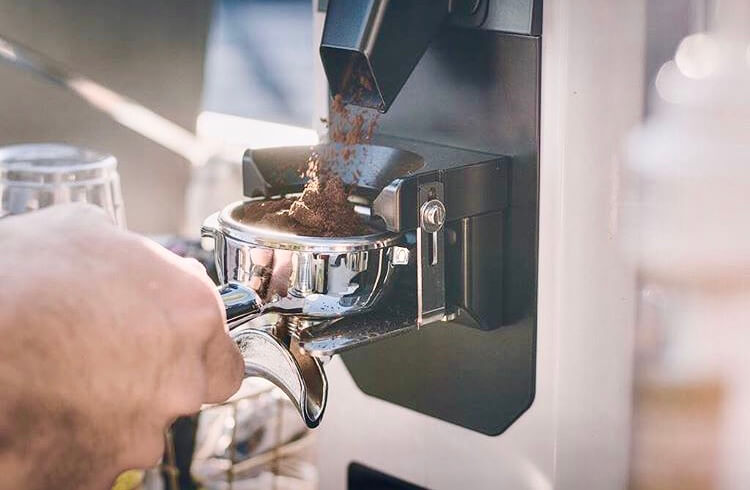Where to Buy Genuine SOE Single Origin Espresso Online
Where to Buy Genuine SOE Single Origin Espresso Online
Blog Article
Coffee Beans 101: Whatever You Need to Understand About Coffee and Blended Coffee Beans
When it comes to coffee, recognizing the nuances of coffee and mixed beans can transform your day-to-day mug. From the growing procedure to roasting techniques, every action plays a function in your coffee experience.
Comprehending Coffee Beans: Kinds and Varieties
When diving right into the globe of coffee, understanding the types and ranges of coffee beans is vital for every single fanatic. You'll largely encounter two main types: Arabica and Robusta. Arabica beans are recognized for their smooth, intricate flavors and lower high levels of caffeine material, making them a preferred amongst coffee connoisseurs. On the other hand, Robusta beans load a strike with a stronger, much more bitter taste and higher high levels of caffeine degrees, typically used in espresso blends.
Ethiopian Yirgacheffe provides brilliant flower notes, while Colombian beans provide a healthy flavor account. By familiarizing on your own with these beans and their flavors, you'll boost your coffee experience and make even more informed choices in your brewing journey.
The Growing Process: From Seed to Bean
When you explore the journey of coffee, it all beginnings with seed selection strategies that establish the structure for quality. From there, farming and collecting play essential roles in making certain the beans grow. Finally, processing approaches change those collected cherries into the coffee beans you enjoy.
Seed Selection Techniques
Choosing the best seeds is necessary for producing high-grade coffee beans, as it lays the foundation for the whole growing procedure. You need to start by selecting seeds from respectable sources that prioritize top quality and hereditary diversity. Seek selections understood to thrive in your specific climate and dirt problems. Take note of the seed's age and storage space problems, as fresh seeds often tend to sprout much better. When feasible, select natural seeds to decrease direct exposure to hazardous chemicals. Take into consideration the disease resistance of various varieties, as this can considerably influence your yield. Do not think twice to seek advice from with local farmers or specialists to acquire understandings into the best seed options for your region. This understanding will certainly improve your coffee-growing experience.
Growing and Harvesting
As you support your coffee seeds into prospering plants, comprehending the cultivation and harvesting process is crucial for accomplishing the finest taste and quality. Start by planting your seeds in well-draining soil, ideally in a shaded location to safeguard them from direct sunshine. As your plants expand, keep constant wetness, and bear in mind their demand for nutrients. Trim regularly to promote air flow and healthy growth.
When it comes time to harvest, seek ripe cherries, which generally turn a dynamic red. Hand-picking is usually the most effective technique to ensure only the ripest cherries are selected. Timing is vital; gathering too late or also early can affect the taste profile of your beans. Embrace patience and care, as this is where high quality begins.

Processing Methods Described
When you have actually collected your coffee cherries, the following crucial step is processing them to change those vivid fruits into the beans you'll make. There are two primary approaches: the dry procedure and the damp procedure. In the completely dry process, you spread the cherries out in the sun to dry, permitting the fruit to ferment and impart special flavors to the beans. On the other hand, the wet procedure entails getting rid of the fruit promptly and fermenting the beans in water, resulting in a cleaner preference. After processing, the beans are hulled, arranged, and usually dried again. Each method impacts the flavor profile, so explore both can assist you find your favored mixture. Understanding these approaches is vital to enjoying your coffee experience.
Toasting Methods: How Taste Is Established
When it comes to roasting coffee beans, understanding roast degrees is key to revealing their one-of-a-kind tastes. Each roasting strategy influences the scent and enhances the flavor advancement procedure, providing you a richer coffee experience. Allow's check out just how these elements come together to raise your everyday mixture.
Roast Degrees Explained
Roast degrees play an important role fit the taste account of your coffee. When you select a light roast, you'll appreciate bright level of acidity and fruity notes. As you relocate to a tool roast, you'll see a balance of sweet taste and complexity, typically highlighting chocolate or sugar flavors. Dark roasts, on the various other hand, supply bold, smoky characteristics with much less acidity, making them abundant and durable. Each degree results from different roasting times and temperatures, impacting the beans' chemical composition. By comprehending these levels, you can better select a coffee that matches your preference choices. Experiment with different roasts to uncover which one resonates with you, enhancing your general coffee experience and satisfaction.
Influence On Aroma
The roast degree not only affects the taste of your coffee but likewise substantially influences its fragrance. When you select a light roast, you'll frequently observe bright, floral notes that can make your coffee odor fresh and vibrant. As the beans darken, the scent shifts; a medium roast brings out more well balanced, caramelized aromas, while a dark roast often tends to feature bold, great smoky touches. Each toasting method launches different volatile substances, forming exactly how your coffee smells. In addition, the quality of the beans plays a critical function; newly baked coffee releases much more fragrant oils, improving that tempting aroma. Pay focus to the roast level-- it's vital to exposing the full aromatic experience of your brew.
Flavor Growth Refine
As you explore the taste development procedure, you'll discover that toasting strategies play an essential duty fit the preference profile of your coffee. The toasting temperature level and time straight affect the acidity, sweetness, and resentment of the beans. Light roasts maintain more of the bean's original tastes, highlighting fruity and floral notes. Tool roasts balance acidity and body, offering an all-round flavor. Dark roasts, on the various other hand, draw out bold, great smoky characteristics while lessening the bean's integral top qualities. During roasting, chain reactions, like the Maillard response and caramelization, transform the beans and enhance their intricacy. Explore different roasting degrees can help you locate your excellent mixture, so do not hesitate to taste and uncover the abundant range of tastes!
Coffee vs. Blended Coffee: Secret Distinctions
Coffee and mixed coffee each offer special experiences that deal with different preferences and choices. Espresso is a focused coffee made by compeling warm water via finely-ground coffee beans, leading to an abundant, bold flavor and a luscious layer of crema on the top. It's often delighted in as a shot or used as a base for beverages like coffees and cappucinos.
On the other hand, combined coffee integrates numerous beans from different areas, creating a much more balanced flavor account. You'll frequently find blends that highlight body, acidity, or sweet taste, making them functional for different brewing methods. While coffee concentrates on intensity, mixed coffee may offer a more comprehensive variety of tastes that can transform with each sip.
Eventually, your selection between coffee and mixed coffee boils down to your individual preference. Whether you hunger for a quick jolt or a leisurely mug, both alternatives have something scrumptious to provide.

Developing Techniques: Opening the Perfect Cup
When it concerns brewing coffee, finding the right method can transform your experience and elevate your mug. Each developing strategy has its distinct charm and can considerably influence your coffee's flavor and scent. For instance, utilizing a French press permits you to appreciate a robust and abundant brew, while a pour-over approach provides a clean, brilliant mug with distinct flavors.
If you favor espresso, spending in a quality device can help you understand the art of drawing shots. For comfort, a single-serve vessel system offers rate without sacrificing preference.
Do not forget cold mixture, which supplies a smooth, much less acidic coffee suitable for hot days. Trying out different approaches to find what reverberates with your taste. Each brewing technique opens a new world of opportunities, so take the time to check out and find your excellent mug. Happy developing!
Tasting Notes: Recognizing Taste Profiles
Just how can you really value your coffee if you do not recognize what tastes to look for? Tasting notes are your guide to recognizing the complex world of coffee. Some coffees could leave a chocolatey or caramel aftertaste, while others might have a brilliant, tidy finish.
Consider the body of the coffee, also; is it airy and light or thick and syrupy? Do not forget acidity; a brilliant level of acidity can include vitality, while a low level of acidity could give a smoother experience. By determining these taste accounts, you'll strengthen your link with each cup, making coffee tasting a delightful trip of exploration.

Tips for Selecting and Storage Coffee Beans
Selecting and keeping coffee beans appropriately can significantly boost your developing experience. Beginning by picking top quality beans that suit your preference. Search for quality; beans baked within the last two weeks are ideal. Inspect the roast day on the product packaging, and buy from regional stores or credible roasters.
When you have your beans, save them in an impermeable container to stop exposure to air, light, and dampness. A dark, awesome area functions best, so avoid maintaining them in the refrigerator or fridge freezer, as this can present moisture. Just grind the amount you need to preserve freshness; whole beans retain taste longer than pre-ground coffee.
Finally, attempt to utilize your beans within 2 to 4 weeks after opening up for peak preference. Complying with these pointers will ensure your coffee stays satisfying and tasty, boosting your day-to-day mixture to brand-new heights.
Often Asked Inquiries
The Length Of Time Do Coffee Beans Remain Fresh After Roasting?
Coffee beans remain fresh for concerning 2 weeks after toasting - SOE. You must save them in a closed container, far from light and dampness. Afterwards, their flavor and scent start to lessen significantly

Can I Mix Different Coffee Bean Varieties?
Absolutely, you can mix different coffee bean ranges! Trying out blends can boost flavors and produce an unique preference profile. Simply see to it to balance the staminas and attributes of each variety for the very best results.
What Is the Suitable Work Size for Coffee?
For espresso, you'll want a great work size, about the texture of table salt. This permits excellent extraction, leading to a rich, delicious shot. Experiment a bit to discover what matches your preference best!
Exactly How Does Altitude Affect Coffee Bean Flavor?
Elevation influences coffee bean taste by influencing the development rate and chemical composition. Higher altitudes result in slower maturation, which boosts acidity and complexity, offering your coffee a unique and vibrant taste you will not fail to remember.
Exist Decaffeinated Versions of Coffee Beans?
Yes, there are decaffeinated variations of espresso beans. You can delight SOE in an abundant espresso taste without the high levels of caffeine kick. Simply try to find "decaf" blends at your regional coffee bar or specialty shop.
Coffee Beans 101: Whatever You Required to Know Regarding Coffee and Blended Coffee Beans.
When diving right into the globe of coffee, comprehending the kinds and ranges of coffee beans is necessary for every lover.When it comes to roasting coffee beans, comprehending roast degrees is crucial to exposing their special tastes. Coffee is a concentrated coffee brewed by compeling warm water through finely-ground coffee beans, resulting in a rich, strong taste and a creamy layer of crema on top.On the various other hand, mixed coffee incorporates different beans from different regions, developing an extra well balanced flavor profile.
Report this page